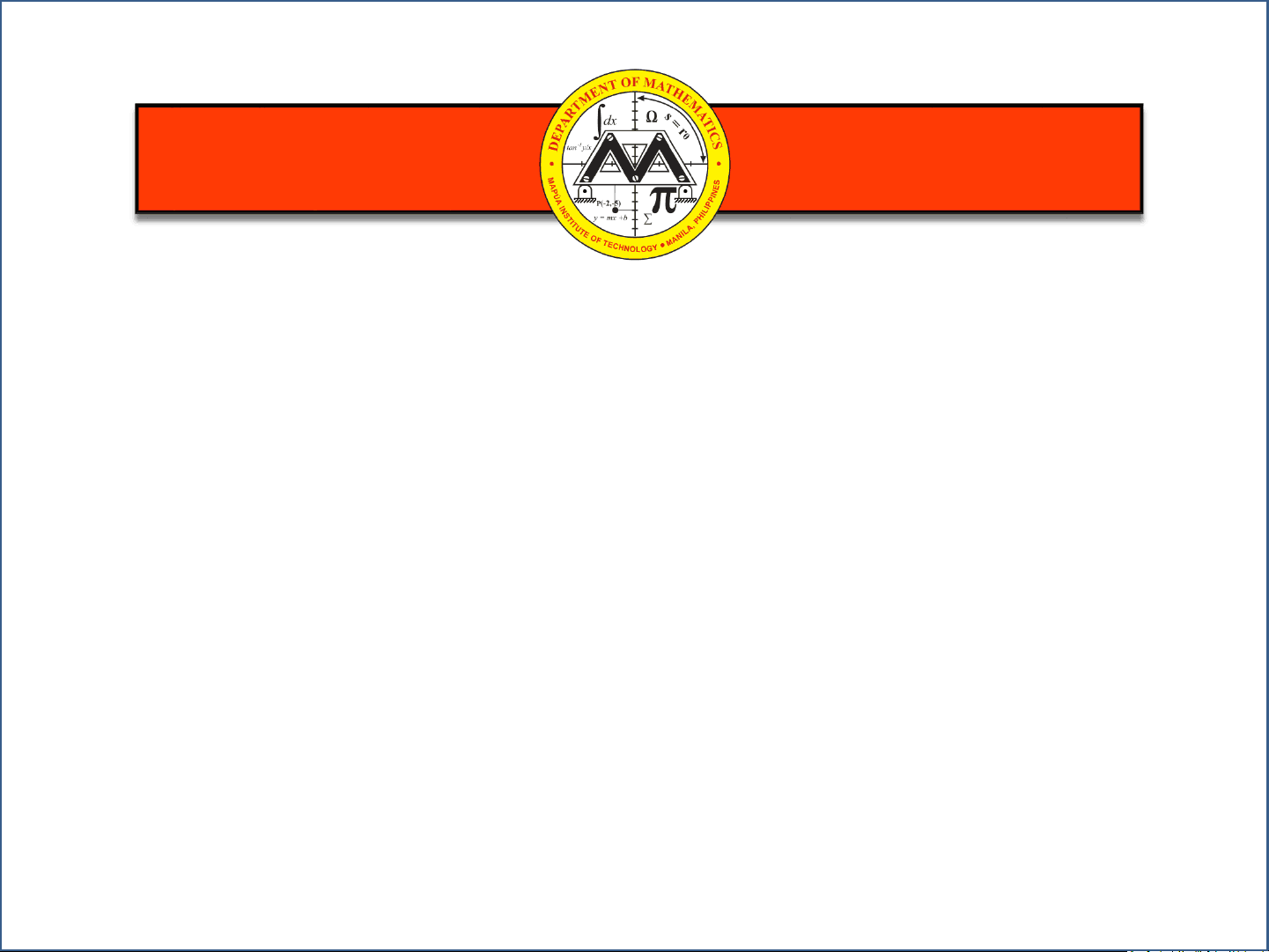

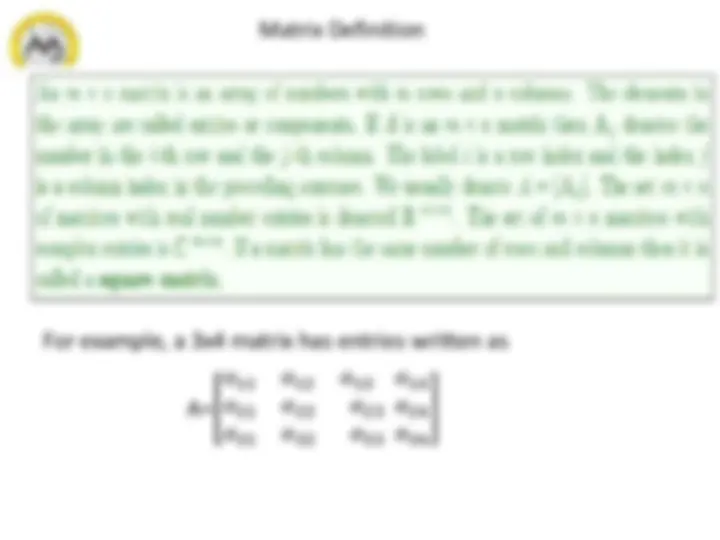
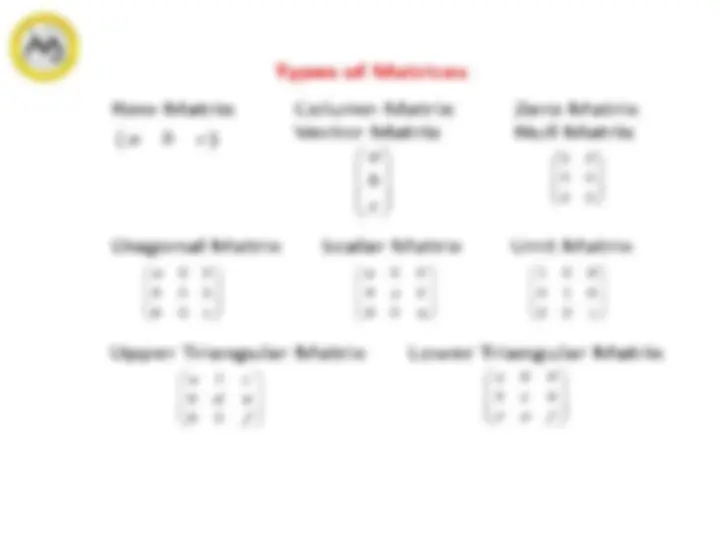
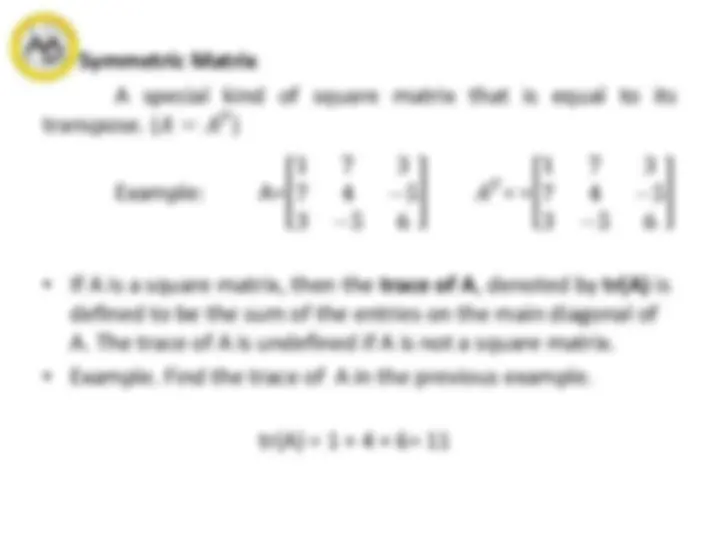
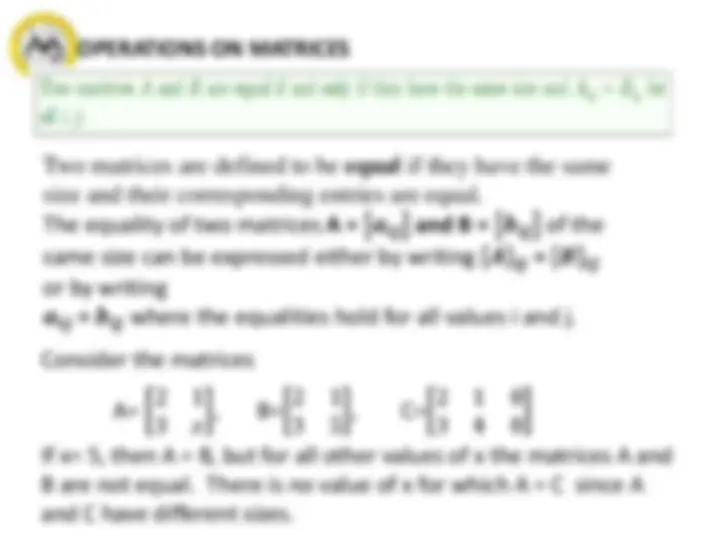
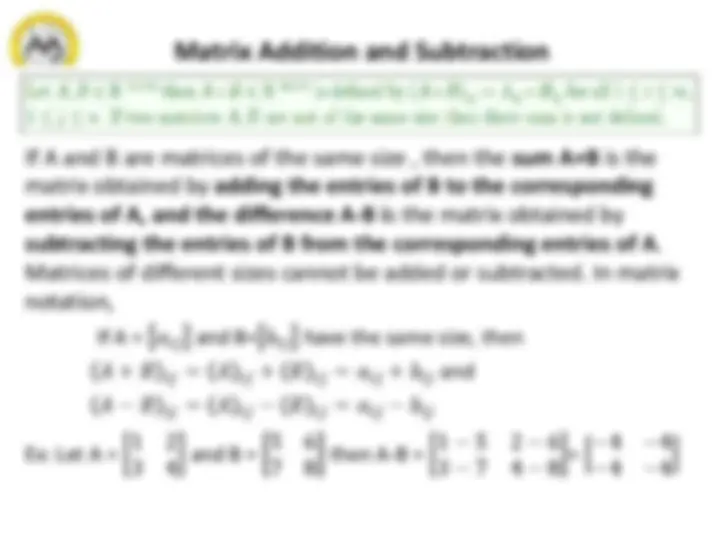
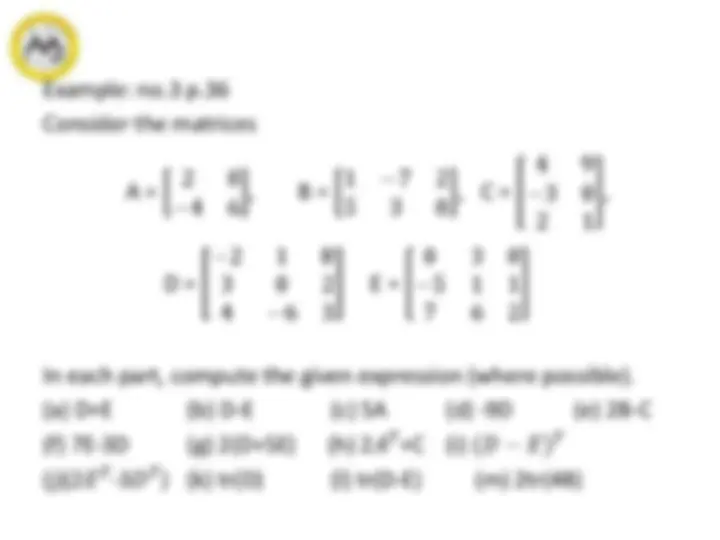
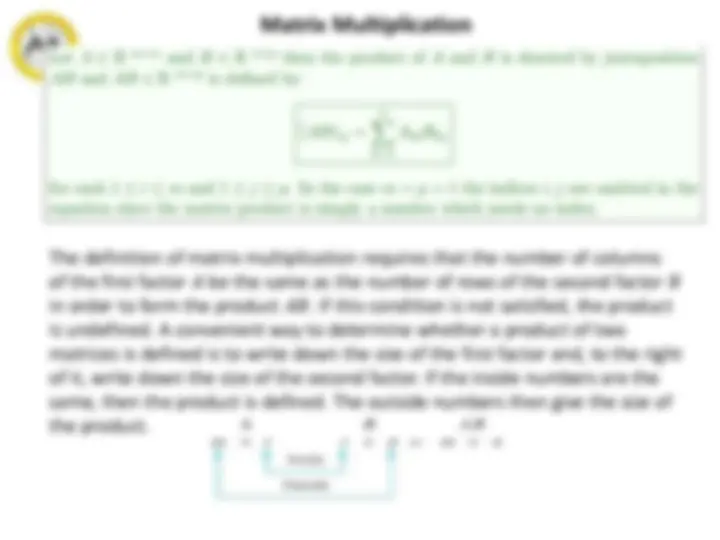
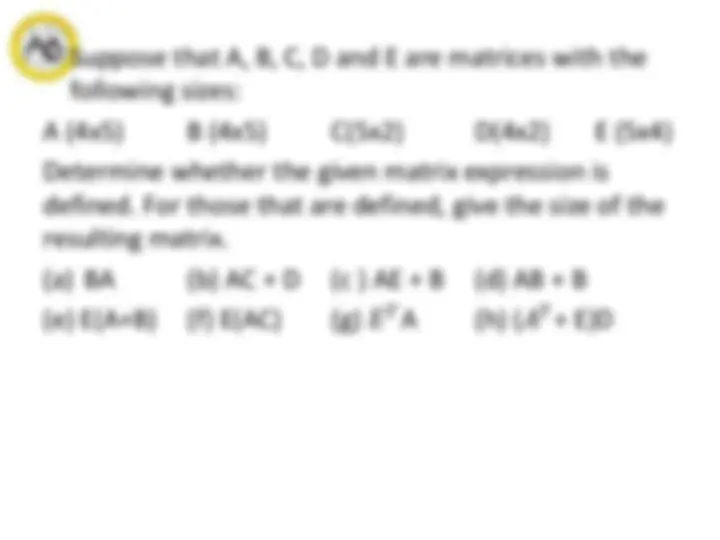
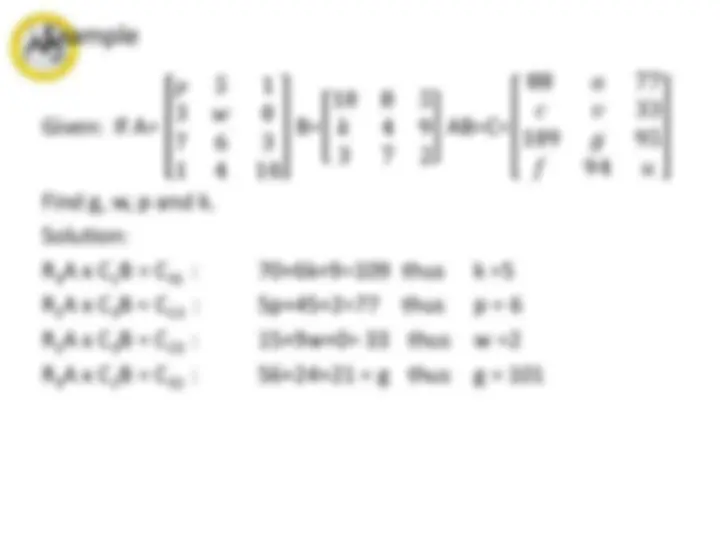
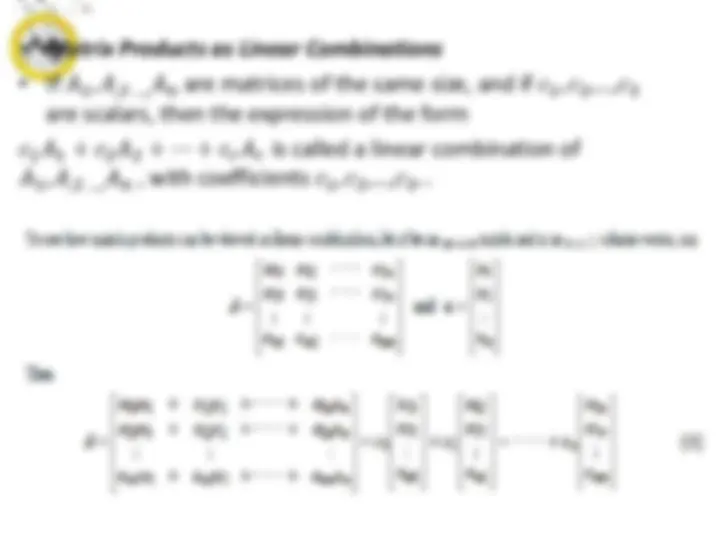
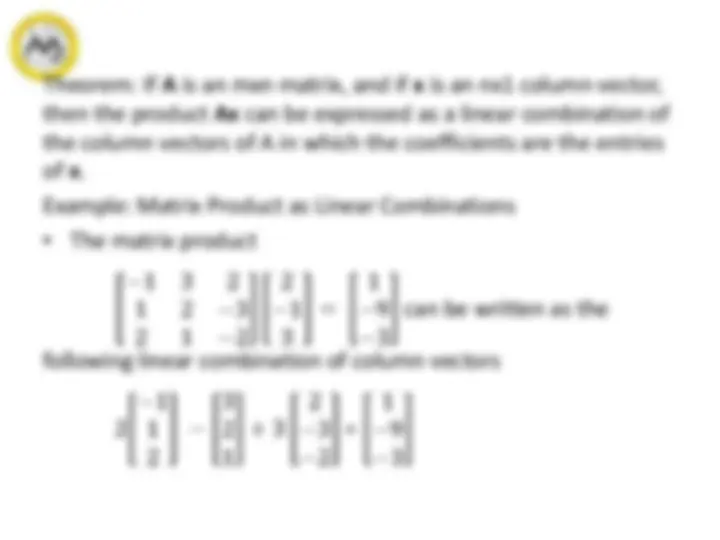
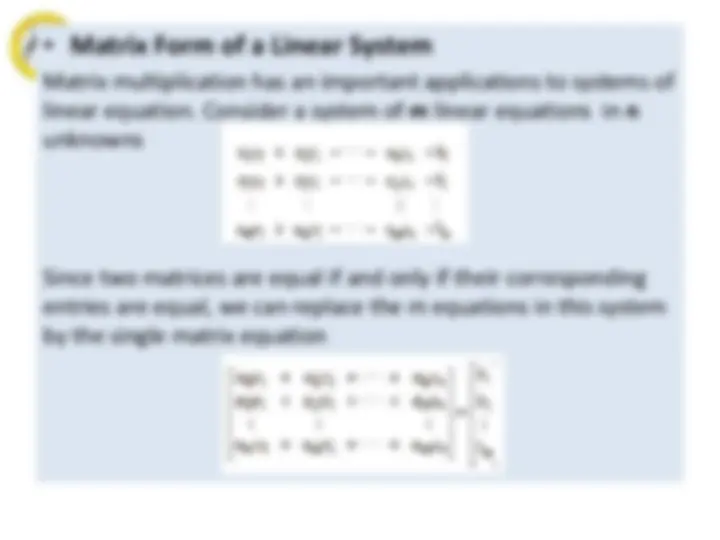
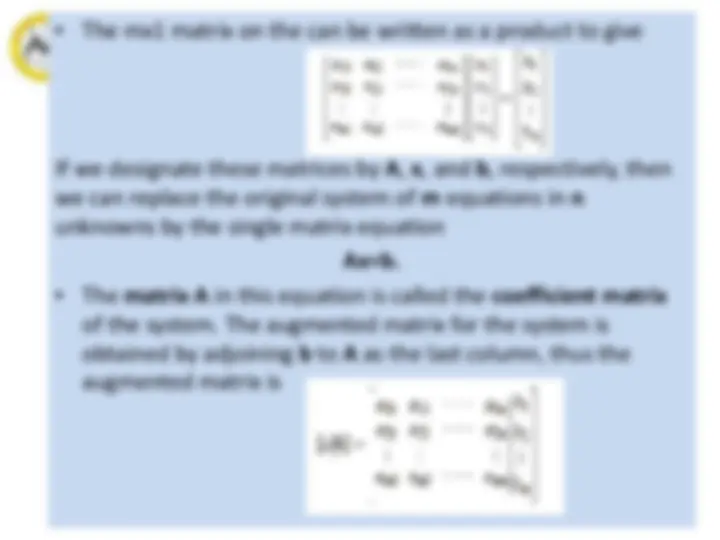
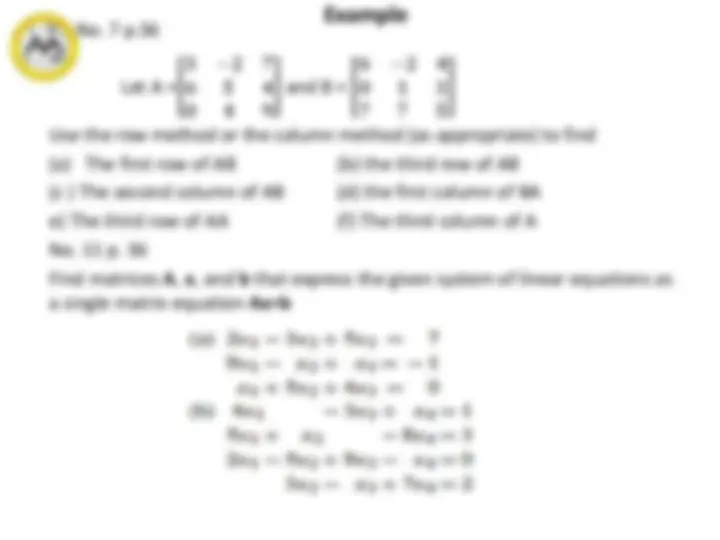
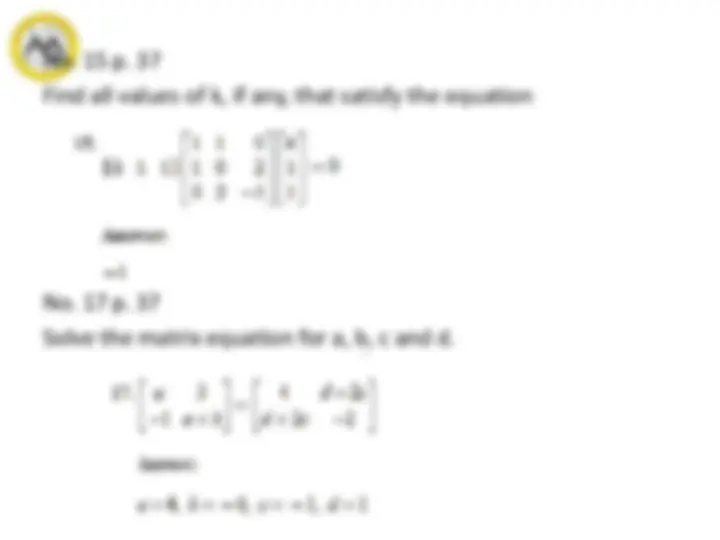




Study with the several resources on Docsity

Earn points by helping other students or get them with a premium plan


Prepare for your exams
Study with the several resources on Docsity

Earn points to download
Earn points by helping other students or get them with a premium plan
Community
Ask the community for help and clear up your study doubts
Discover the best universities in your country according to Docsity users
Free resources
Download our free guides on studying techniques, anxiety management strategies, and thesis advice from Docsity tutors
An introduction to matrices and matrix operations. It covers topics such as matrix addition, subtraction, scalar multiplication, multiplication, transpose, trace, and submatrices. It also explains the types of matrices, including row, column, vector, diagonal, scalar, upper triangular, zero, null, unit, and lower triangular matrices. The document also includes examples of matrix operations and their applications in linear systems and equations. The document concludes with answers to sample questions related to matrix operations.
Typology: Lecture notes
1 / 26

This page cannot be seen from the preview
Don't miss anything!



















At the end of this lesson, you are expected to demonstrate the following:
Matrix Definition For example, a 3x4 matrix has entries written as A=
Transpose of a matrix If 𝐴 is any 𝑚 × 𝑛 matrix, then the transpose of 𝑨, denoted by 𝐴 𝑇 , is defined to be the 𝑛 × 𝑚 matrix that results from interchanging the rows and columns of 𝐴; that is, the first column of 𝐴 𝑇 is the first row of 𝐴, the second column of 𝐴 𝑇 is the second row of 𝐴, and so forth.
𝑇 = =
If A and B are matrices of the same size , then the sum A+B is the matrix obtained by adding the entries of B to the corresponding entries of A, and the difference A-B i s the matrix obtained by subtracting the entries of B from the corresponding entries of A. Matrices of different sizes cannot be added or subtracted. In matrix notation, If A = 𝑎𝑖𝑗 and B= 𝑏𝑖𝑗 have the same size, then 𝐴 + 𝐵 (^) 𝑖𝑗 = 𝐴 (^) 𝑖𝑗 + 𝐵 (^) 𝑖𝑗 = 𝑎𝑖𝑗 + 𝑏𝑖𝑗 and 𝐴 − 𝐵 (^) 𝑖𝑗 = 𝐴 (^) 𝑖𝑗 − 𝐵 (^) 𝑖𝑗 = 𝑎𝑖𝑗 − 𝑏𝑖𝑗 Ex: Let A = 1 2 3 4 and B = 5 6 7 8 then A-B = 1 − 5 2 − 6 3 − 7 4 − 8 = − 4 − 4 − 4 − 4
If A is any matrix and c is any scalar, then the product cA is the matrix obtained by multiplying each entry of the matrix A by c. The matrix cA is said to be a scalar multiple of A. If A = 𝑎𝑖𝑗 , then 𝑐𝐴 (^) 𝑖𝑗= c 𝐴 (^) 𝑖𝑗 =c𝑎𝑖𝑗. Let A=
then 3A =
Example: no.3 p. Consider the matrices A =
In each part, compute the given expression (where possible). (a) D+E (b) D-E (c) 5A (d) - 9D (e) 2B-C (f) 7E-3D (g) 2(D+5E) (h) 2𝐴 𝑇 +C (i) (𝐷 − 𝐸) 𝑇 (j)(2𝐸 𝑇
Matrix Multiplication The definition of matrix multiplication requires that the number of columns of the first factor 𝐴 be the same as the number of rows of the second factor 𝐵 in order to form the product 𝐴𝐵. If this condition is not satisfied, the product is undefined. A convenient way to determine whether a product of two matrices is defined is to write down the size of the first factor and, to the right of it, write down the size of the second factor. If the inside numbers are the same, then the product is defined. The outside numbers then give the size of the product.
Theorem: If A is an mxn matrix, and if x is an nx1 column vector, then the product Ax can be expressed as a linear combination of the column vectors of A in which the coefficients are the entries of x. Example: Matrix Product as Linear Combinations
can be written as the following linear combination of column vectors 2